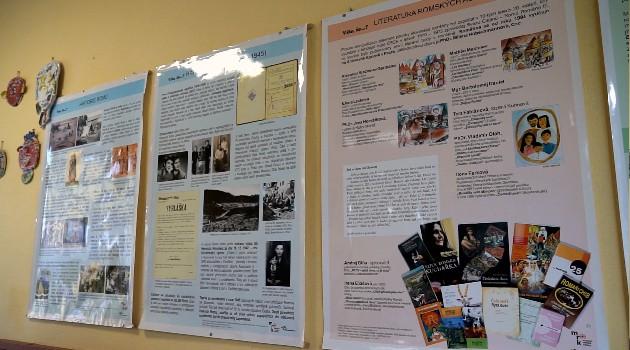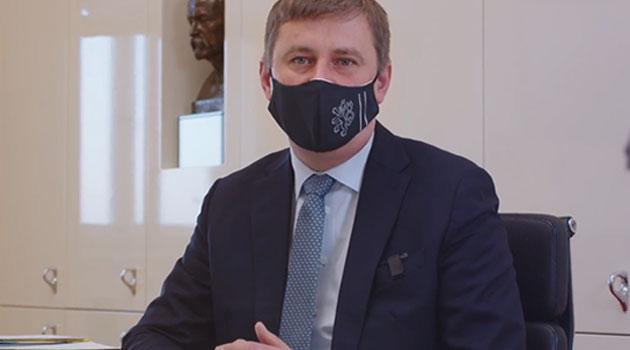Czech Museum of Romani Culture collaborates on first-ever posters for primary schools about Romani art, history, language, literature and music

The art, history, literature and music of the Romani people are all subjects that are not part of regular instruction in the Czech schools. The company “Cesta do školy” (“The Way to School”), in collaboration with the Museum of Romani Culture in Brno, has now created posters that are intended to familiarize primary school pupils with these aspects of Romani culture.
The set of six posters, intended for use in the schools, focuses on Romani art, history, language, literature and music. The content has been developed by experts for children and youth in upper primary school (through ninth grade).
“Pupils are able to learn about Romani history from the content of these six posters, from the beginning of the Romani peregrination until the 19th century, and then about the history of Romani people between 1918 and 1945, i.e., also about the Holocaust and its Romani victims. There is also information about the Romanes language, Romani music in our country and around the world, fine art produced by Romani people and literature written by Romani authors,” Lubomíra Oláhová of the Cesta do školy company told ROMEA TV in an interview.
The Museum of Romani Culture loaned documentary materials and images for the project, contributed to writing the textual component of the posters, and sees the potential of these didactic aids in their attractive production and simplicity of inclusion into the school environment. “The posters with Romani subject matter are perceived by us to be quite user-friendly for all Czech primary schools, and not just those where Romani pupils are represented,” a representative of the Museum of Romani Culture told ROMEA TV.
“The ambition of the posters is to educate pupils and their teachers in Romani culture and history, which to date is neglected in the primary school curricula, and to do so in a rather attractive way, because they make sophisticated use of visualization methods. They have been appropriately differentiated according to subject matter so they can be presented either on their own or as a complete set. We also perceive that while the facts they contain are basic, if used in the schools as support aids they provide a sufficient amount of condensed, key information. A teacher will not necessarily have to look up further information to use them,” the museum representatives said.
“The posters convey information for better knowledge about this ethnic group, there is no doubt they can be a resource to support a relationship between a pupil who is Romani and a teacher and to break down intercultural ignorance or stereotypes,” the representatives of the museum believe. The posters with Romani subject matter are currently on display in three museums around the Czech Republic as well.
The Museum of Romani Culture in Brno, the J. A. Comenius National Pedagogical Museum in Prague, and the Comenius Museum in Přerov all have the posters up on display. “Posters for use in primary schools that focus on an ethnic group living in our state have never existed here before. Similar posters did begin to be produced after 1989, but they were focused in part on the Holocaust and included its Romani victims. That means Romani people were being remembered here just in the context of the Holocaust. This is the first time in Czech history and in Czech education that we have images dedicated to Romani people not from the perspective of them as victims, but from the perspective of an ethnic group with its own culture and history,” Jarmila Klímová, the curator of the Comenius Museum in Přerov, where she researches the history of education, pedagogy and the development of such images as teaching aids, told ROMEA TV.
Thanks to a sponsorship gift and to aid from the Slovo 21 organization in Prague, the posters will also be used in nine children’s homes in the Moravian-Silesian and Olomouc Regions. “We were contacted by the Cesta do školy organization, which offered us these images with Romani subject matter. We wanted to use them because we also have Romani children here. We put them up in the corridor near the entrance to the building because members of the public come in that way, so anybody can read something about Romani history, culture and art,” said Alena Urbášková of the Šance (“Chance”) Children’s Home.
Cesta do školy will continue to reach out to the Czech primary schools to include the posters in their instruction. Teachers will be able to complete an accredited course that will aid them on how to use the posters methodologically.
